As we have discovered over the past few months, there is an awful lot to think about when designing and manufacturing a new yarn for hand knitting! There are many stages to consider, and many decisions to be made. It occurred to me that one of the processes that’s least visible to hand knitters is how the wool they work with actually gets clean. As anyone who has handled a fleece will know, cleaning raw wool is not particularly glamorous but it is certainly essential. I thought you might like to see a little about these early stages of our yarn’s manufacture.
The raw wool for our yarn was cleaned, its fibres blended, and the blended fibres processed into lovely combed tops here at Haworth Scouring. This large plant is based in Bradford, a short drive from where both Tom and I were born and grew up. The textile industries in Yorkshire and Lancashire have seen an awful lot of changes in the past 50 years, but Bradford is still the beating heart of the British wool industry.
This is a large operation, capable of scouring a million kilos of wool per week. That’s right – a million kilos. Our first order seemed enormous to us, but it is merely a tiny proportion of what Haworth Scouring can process here in a single day.
Much of the raw wool processed here is British, but Haworth Scouring processes wool from other countries too – these are Norwegian bales in the photograph above.
Customers have different requirements, and some of the wool arrives in a very raw state, needing preparation and grading by specialised wool sorters.
Wool grading is a really important, and sadly declining skill. (If you would like to learn more about wool sorting and grading and its importance to the wool industry, I recommend you visit Jamieson and Smith and meet Shetland’s top wool man, Oliver Henry)
The scouring process is designed to remove dirt and other impurities from the raw wool, along with suint (sheep sweat) and lanolin. At Haworth, its really important that this process is as environmentally friendly as it is efficient (more of this later). Here is some wool, prepared and ready for scouring.
The wool is put through a series of washes and rinses at several different temperatures.
It is repeatedly and carefully cleaned with swinging rakes. After every wash you can see the wool becoming gradually cleaner and cleaner . . .
. . . with the wool’s heat and moisture content being monitored at every stage.
After this, the wool goes through a gigantic metal detector. This is one of those processing factors that’s completely obvious when you think of it – sheep often pick up bits of wire in their fleece – but which I’d never previously considered. You don’t want bits of metal in your yarn, and you certainly don’t want it in the machinery that’s making your yarn. The work of the metal detecting machine is reinforced by this lovely chap, who double-checks there’s nothing non-woolly in the wool.
After washing, the wool is dried. As part of the drying process, the fibres are loosened and mixed, and blended together.
Just check out what’s going on in that huge machine!
After drying, the wool is beautifully clean. What a transformation!
For some of the wool that comes through Haworth’s doors, this is almost the end of the story. It is compressed and packaged into huge bales and prepared for the next stage in its journey elsewhere.
These large bales are compressed by an amazing machine, and, as you can see contain over 350kg of wool. It was at this point that the sheer scale of what goes on here started to astound me. This really is a whole lot of wool!
A significant recent investment in new jobs and machinery means that wool that’s not sent away at this stage can be expertly processed at Haworth into tops. There’s now a state-of-the-art combing operation here, and this is where our wool first started to resemble something like yarn. Our unique blend of fine Scottish fibres was developed and created on this machine!
The wool fibres are relatively blobby and clumpy at this stage – the worsted processing practised here, and which we felt was important to get the best out of our wool, enables the fibres to be opened up, smoothed out, and carefully combed to lie parallel to one another. When I observed the several different stages of combing, gilling and drafting, I was very intensely struck by the technological complexity of these machines, their skilled operatives, and the sheer magic both perform.
From raw wool, to lovely combed top!
Here is what is known as a bump top, at the end of the combing process. . .
And here are lots of bump tops, ready to go.
I mentioned previously that environment is as important as efficiency here. The whole purpose of wool scouring is to remove grease and impurities from fleeces: this is a relatively high-impact process, that creates a lot of waste, and Haworth’s verifiable green credentials were certainly important to us when making early decisions about our yarn’s processing and manufacture. The plant’s water monitoring is extremely careful and completely transparent, and we were impressed that very little in this process actually goes to waste at all! Lanolin removed here is sold to the cosmetics and vitamin industries, while other by-products are used as feed for shrimp and prawn farming (who knew?!)
One reason Haworth’s environmental credentials are so laudable is because it has ENco on site – an environmental testing company that does important work with the textile and farming industries. As well as ensuring the wool products produced at Haworth comply with strict environmental standards, ENco also acts as a consultant, testing many different kinds of finished textiles to check for levels of mothproofing agents and other chemicals. Carpets, military uniforms, knitting yarn, and the fabrics used in high-end fashion houses all receive environmental testing and certification here. If you needed to check whether a certain yarn contained 20% or 30% nylon; or discover for how long a particular moth-proofing agent would protect a certain kind of fabric; or wanted to ensure that the animals providing a batch of fleeces had not been treated with particularly harmful pesticides in their sheep dip, then ENco could find out for you. It was absolutely fascinating chatting to Mike and his team, and learning about their work.
Thankyou to everyone at Haworth Scouring, Curtis Wool Direct, and ENco Global Testing for their time and generosity! We’ve learnt an awful lot, and feel very inspired by our visits!
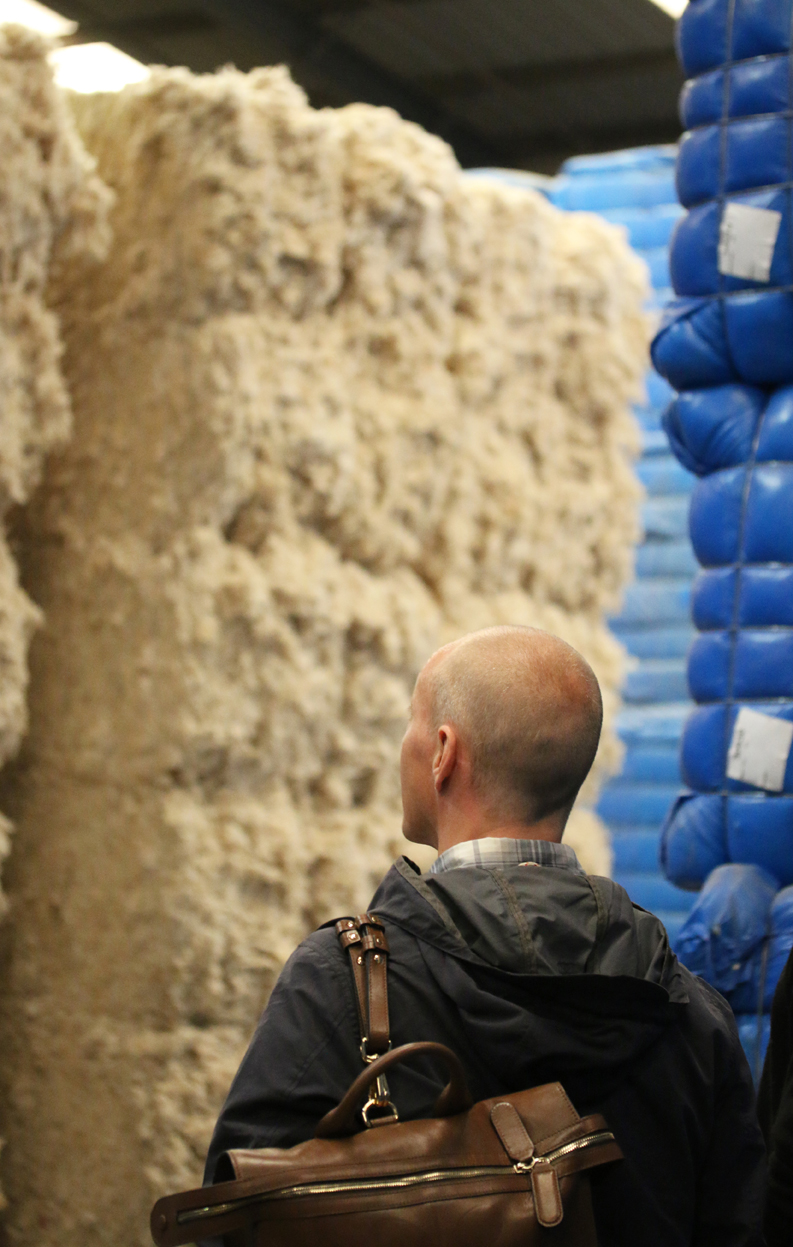
(Tom surveys the wool mountain with anticipation)
Have you signed up for the newsletter to hear more about our yarn? You can do so here!
(if you are having trouble signing up, try selecting the ‘text only’ rather than ‘html’ option)

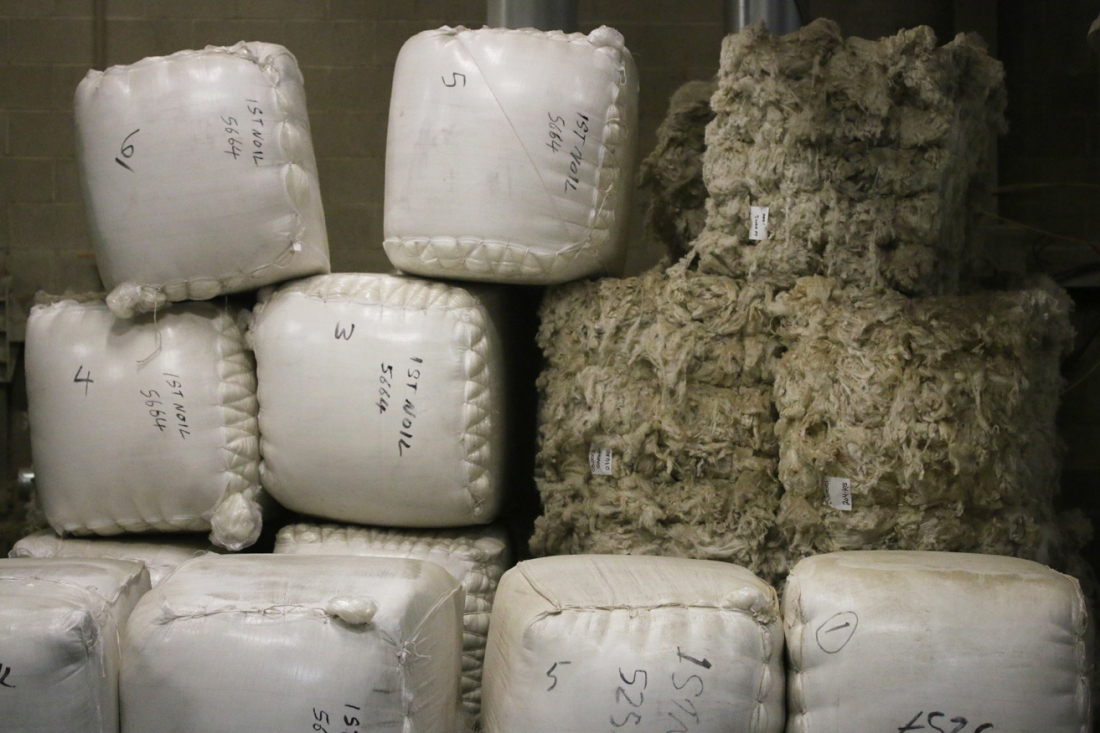
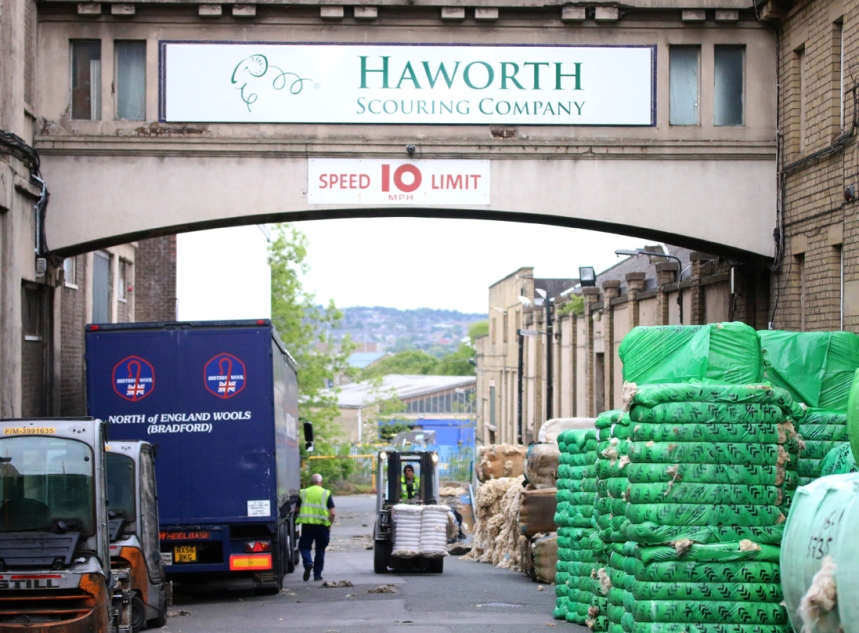
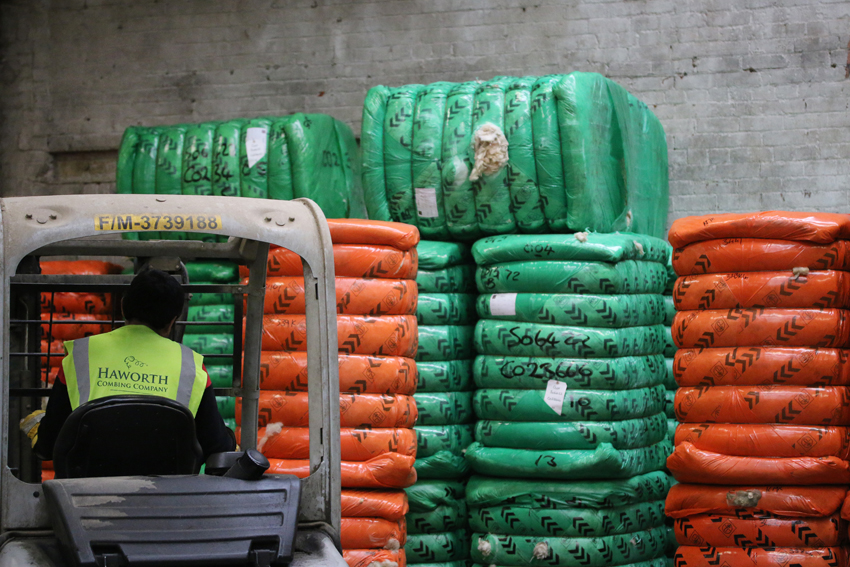

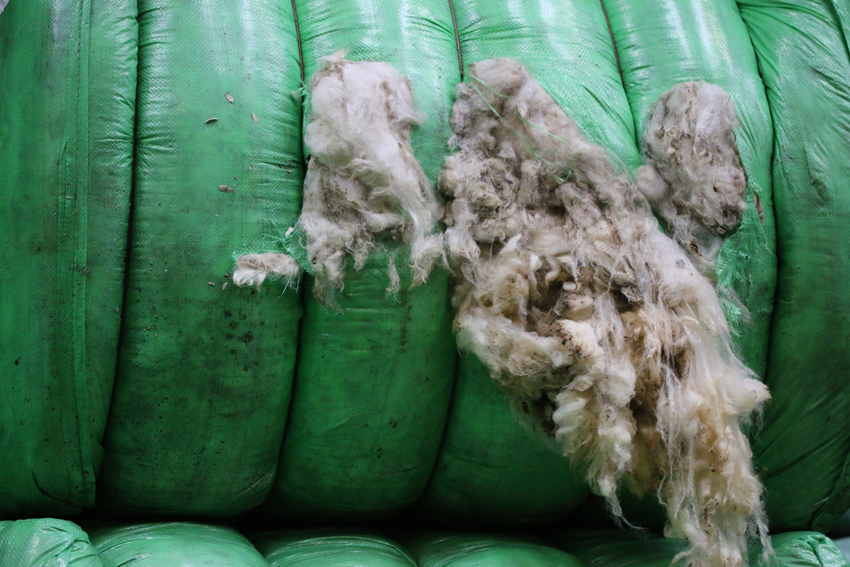
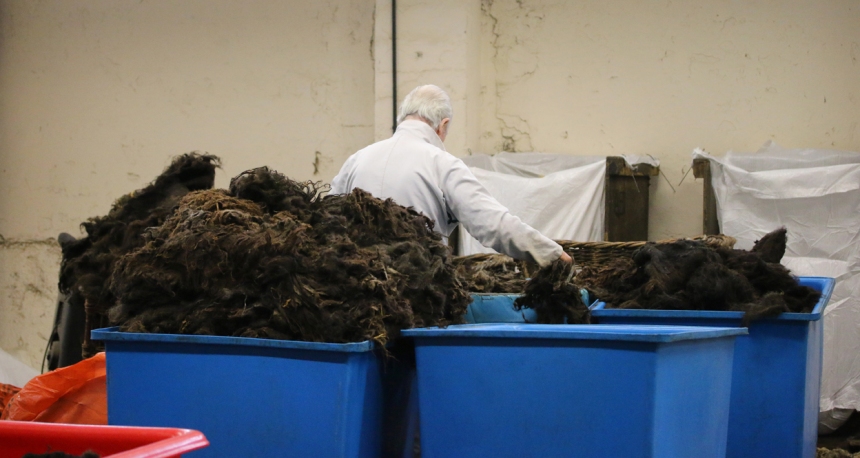

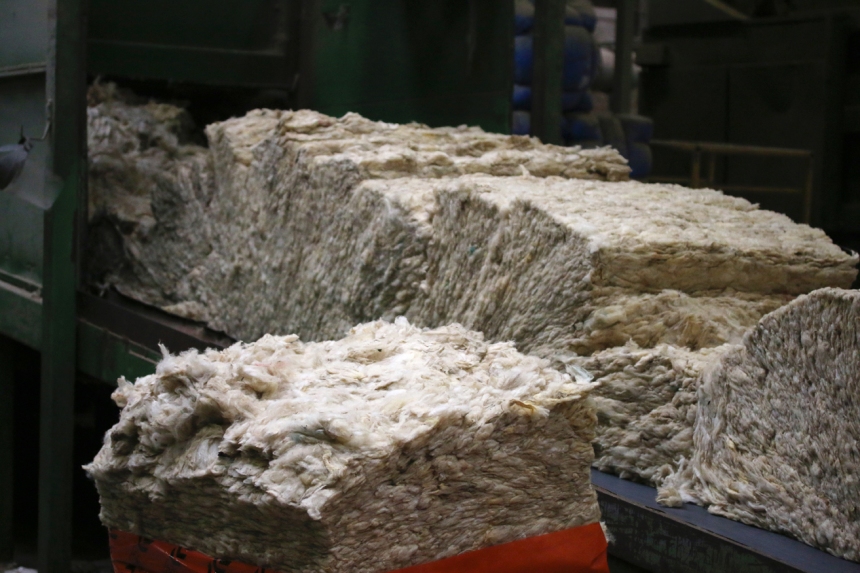


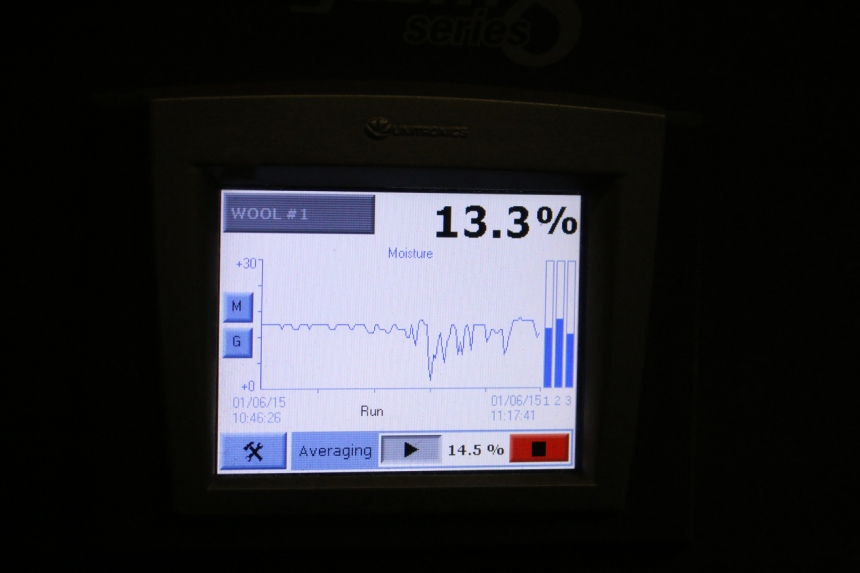
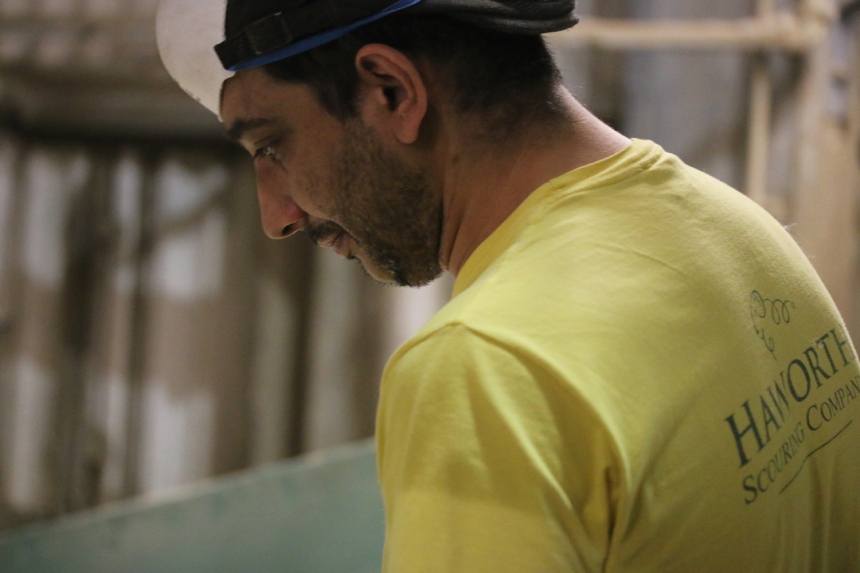
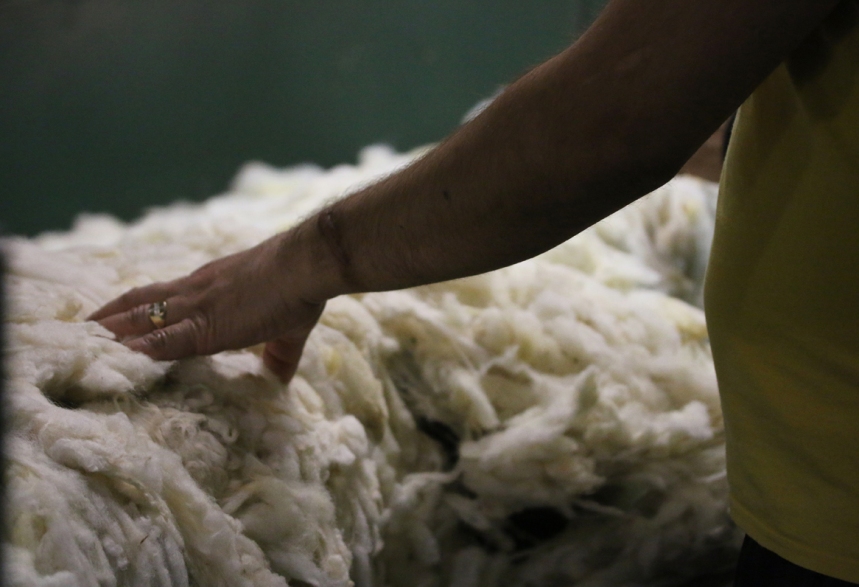
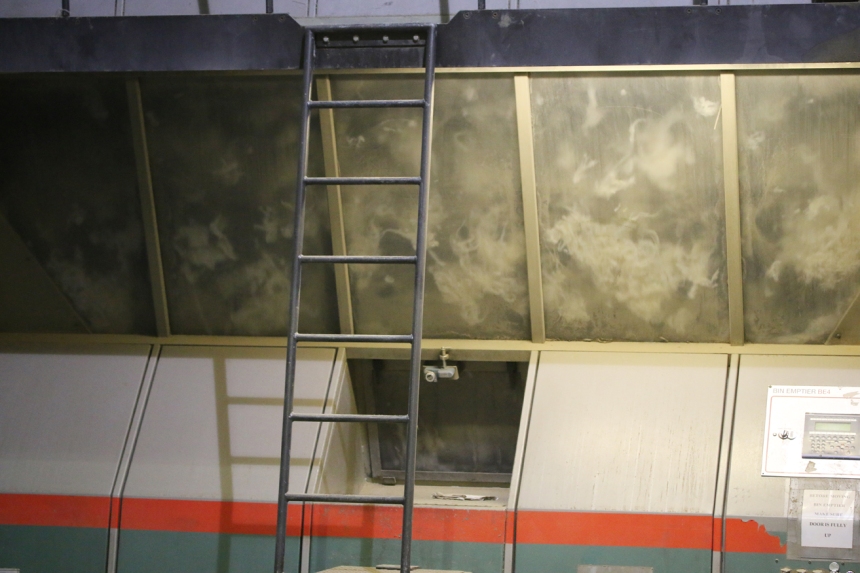
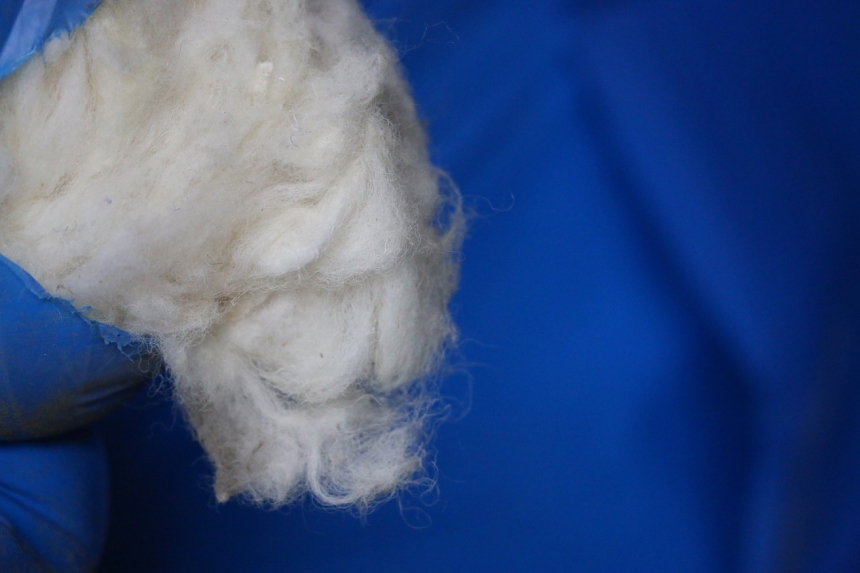
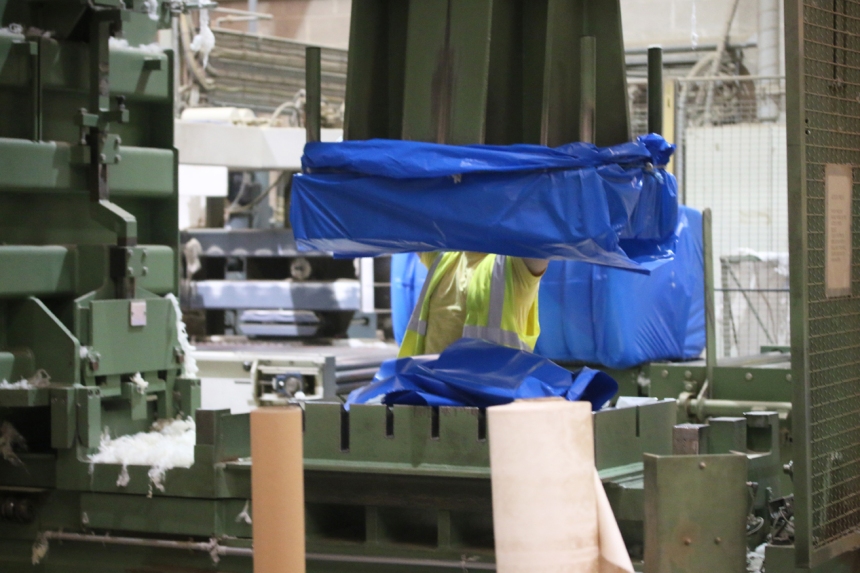
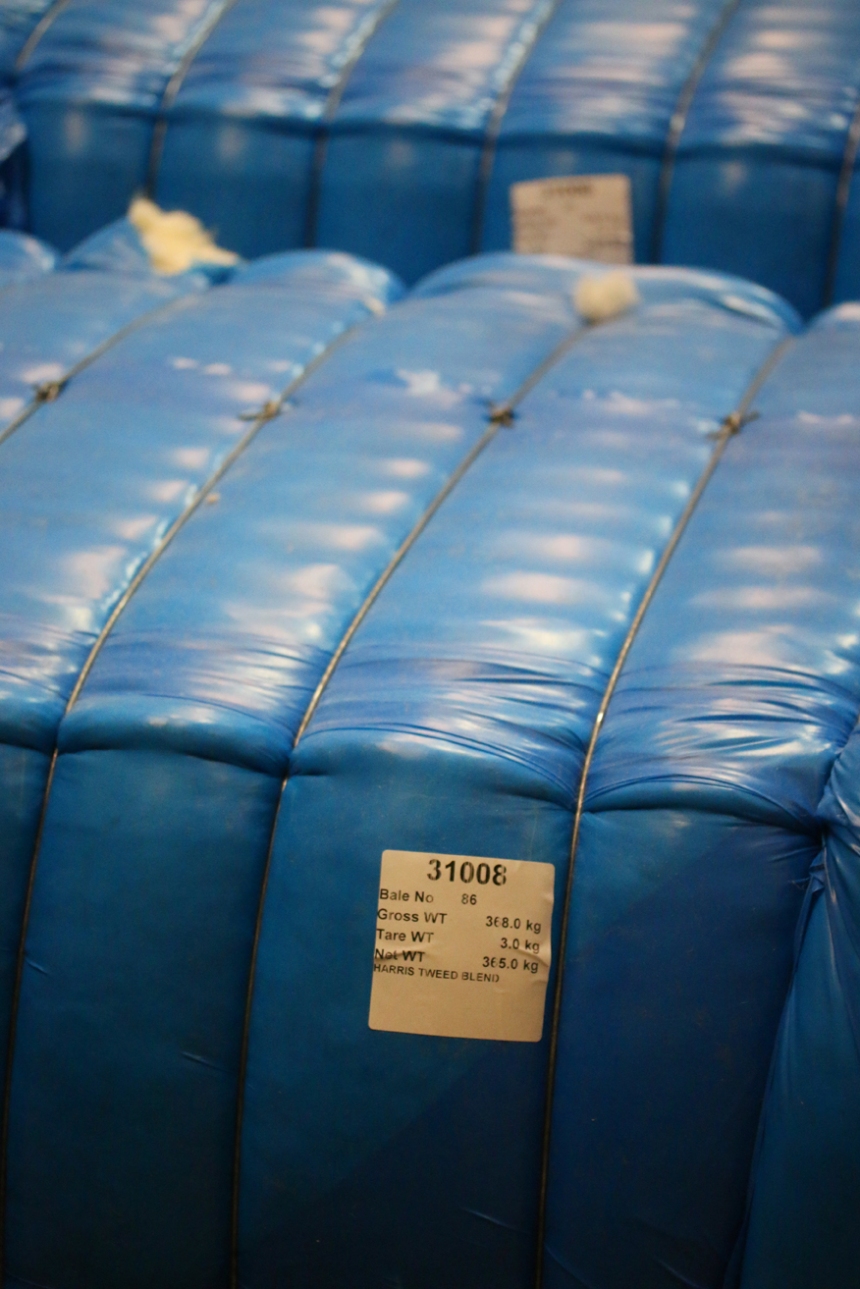
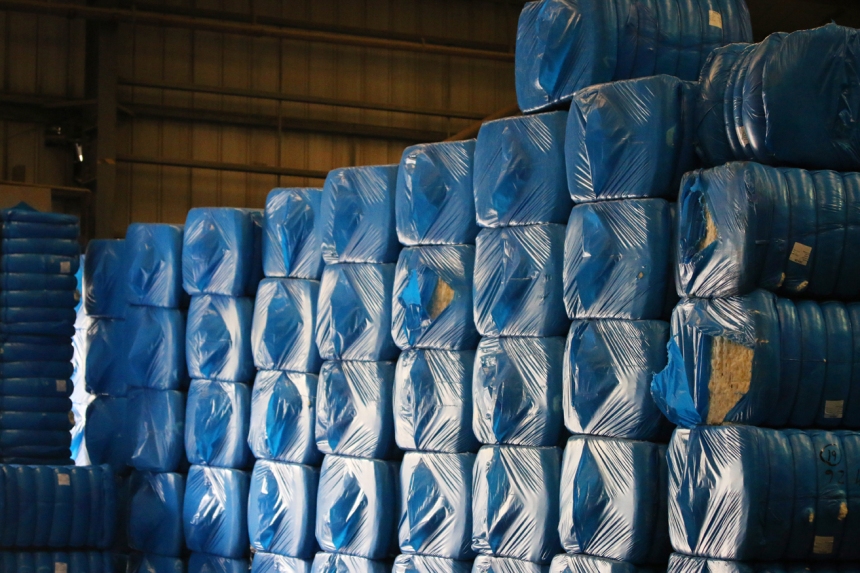
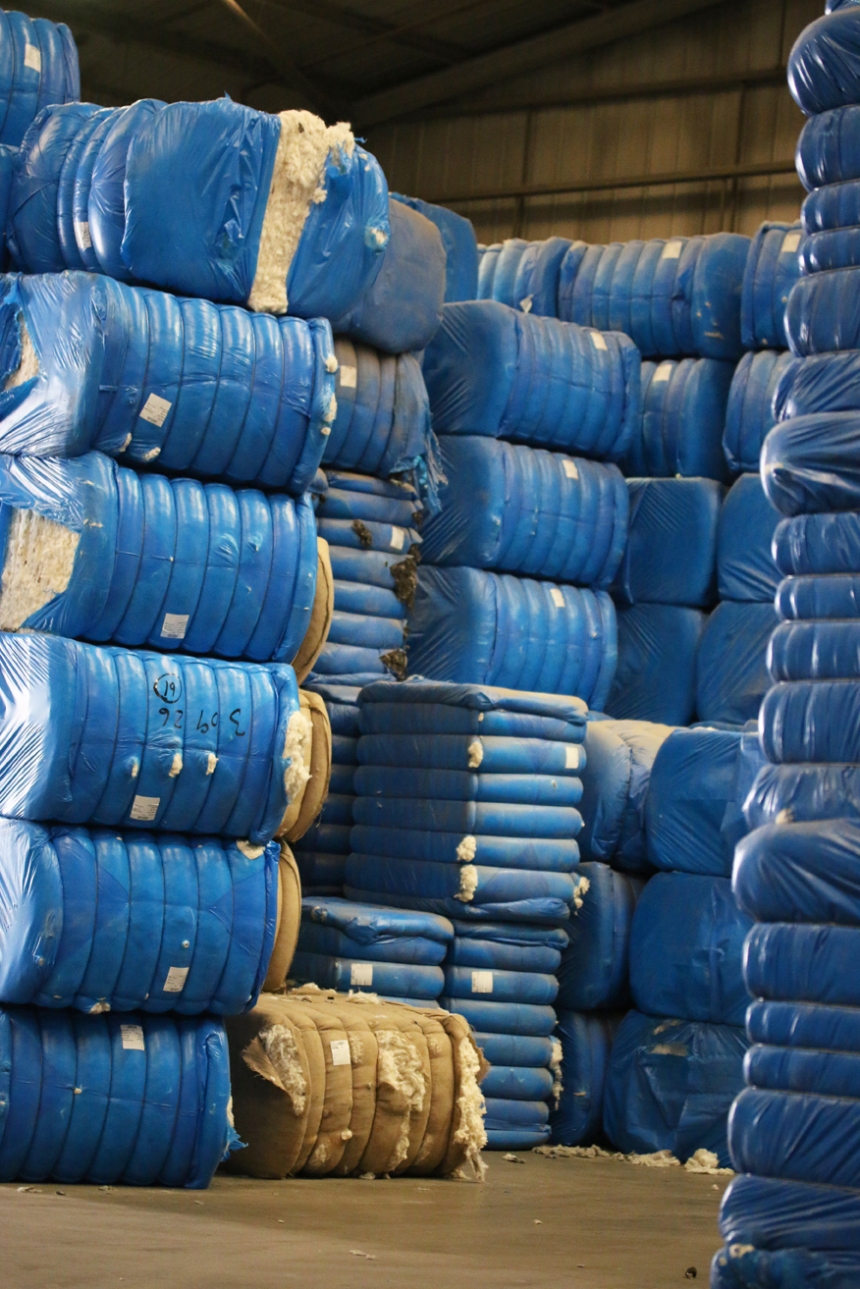
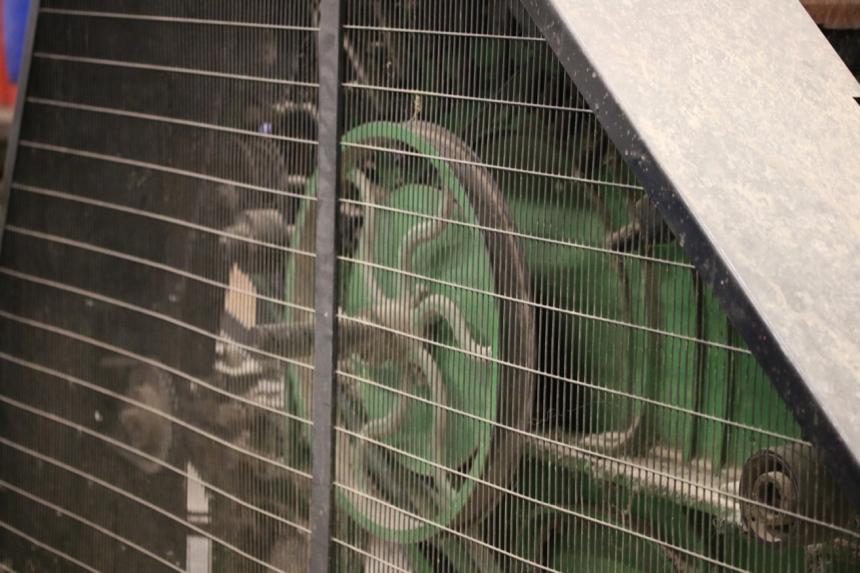
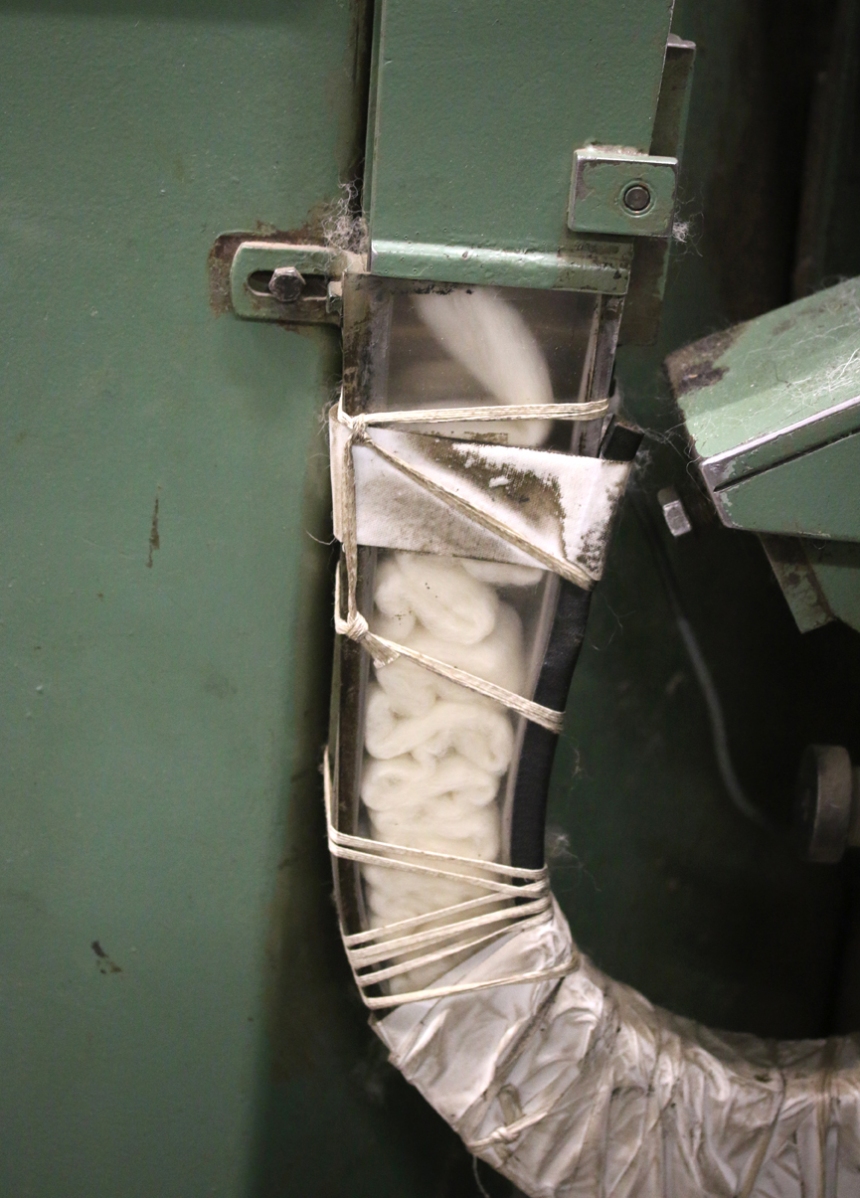
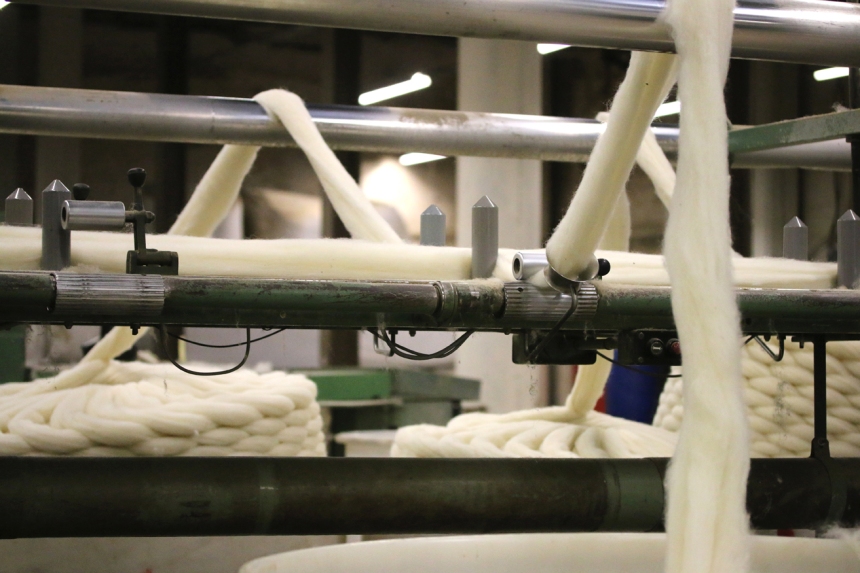

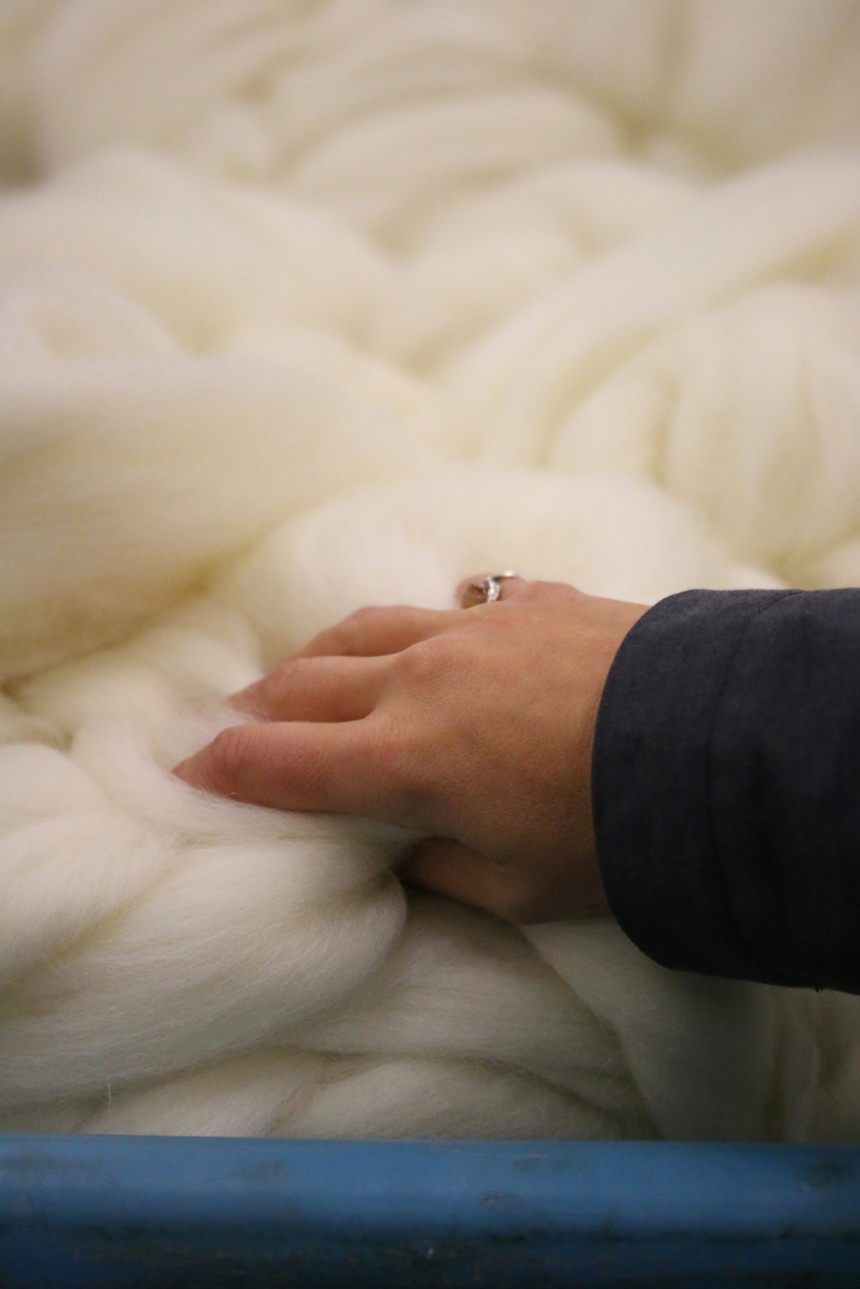
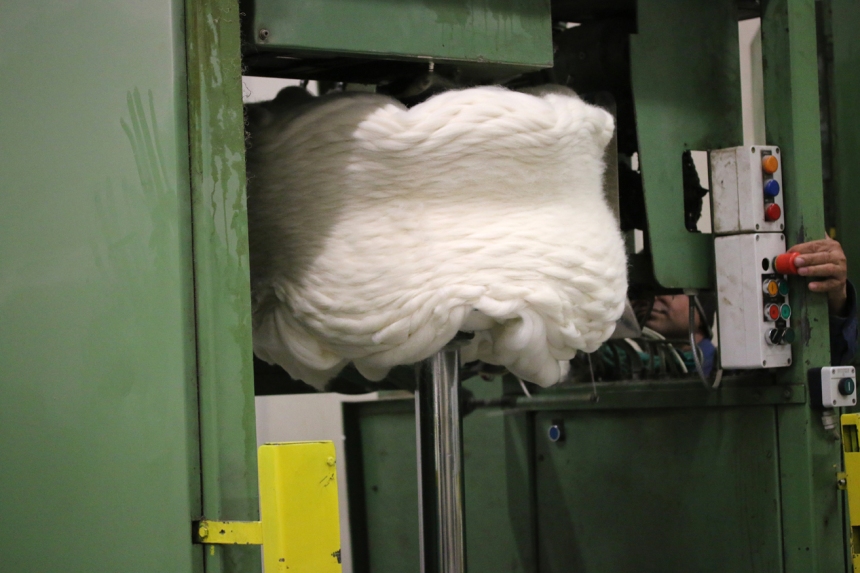
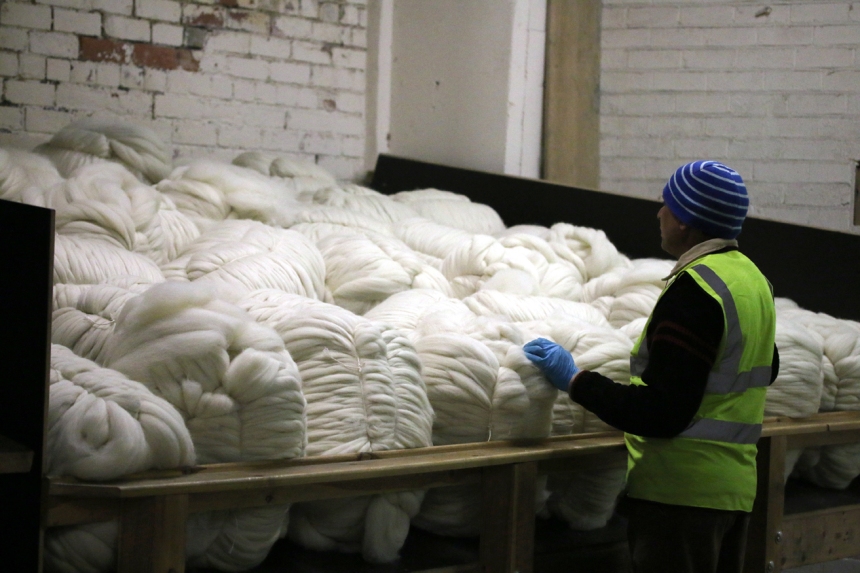

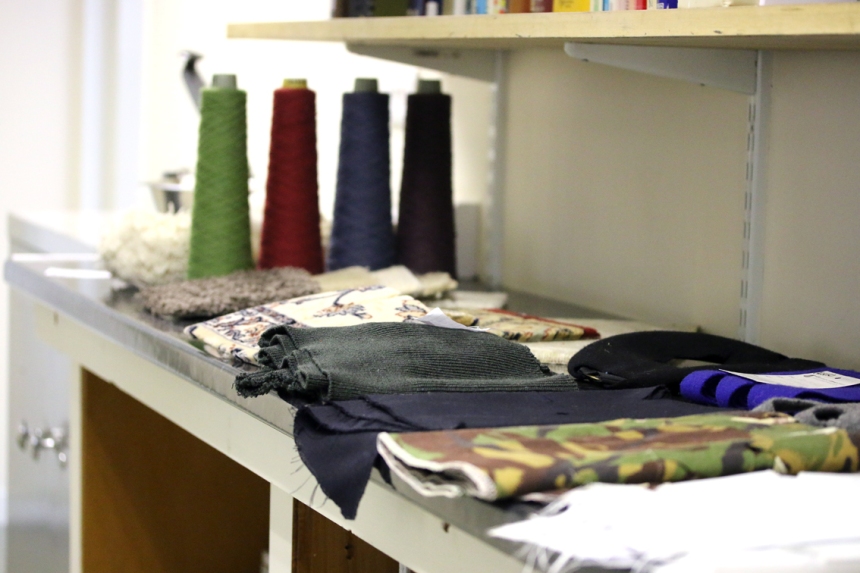
this post is so interesting! Thank You so lot
LikeLike
I wish I could visit for myself. I was equally impressed to tour the Pendleton Woolen Mills in Pendleton, Oregon, saw their trademark Indian blankets being made. The Pendleton Woolen Mills started out (100+ years ago) as a scouring plant. Thank you for this post.
LikeLike
Fascinating. It was very interesting to read about the process of wool making.
LikeLike
What an absolutely fascinating process. I’ve seen part of this up close, albeit on a much smaller scale, at Stonehedge Fiber Mill in Northern Michigan. Their worsted spun wool is so beautiful to use. Looking forward to reading more about your yarn.
LikeLike
I live in Cody, Wyoming, USA, and last month had the privilege to tour Mountain Meadows Wool Mill in Buffalo, Wyoming, about 3 hours drive southeast of Cody. Their mill is a smaller operation than yours in Yorkshire, but very similar process. Having seen first hand the work and care that goes into producing this special fiber has given me a great appreciation for the finished product in my hands. You have expanded that knowledge with your designer’s perspective, and I am completely awed by the entire process! Such knowledge is too precious to lose.
Oh, and Mountain Meadows Wool also uses wool from local sheep — kindred spirits!
LikeLike
Thanks Kate, it’s amazing seeing the process, I am going to show my spinning students the blog post! We spin in the grease, (singles) then wash and ply, sometimes plying in the grease. It would be interesting to see a hand made process – it involves less washing. I realise that’s not possible for your operations, but if you send me a sample of unwashed Buachaille, I’ll process it for you! Bastienne Klein in South Africa.
LikeLike
Thanks for this post. I live close to Bradford and I find it fascinating to see inside this factory. So much local industry, and the textile industry in particular, has disappeared around here that it is wonderful to see the companies that have survived. There seems to be a (very small) renaissance in wool processing around here with a couple of companies bringing various forms of production back to the area. It’s nothing on the heyday of the area, when virtually every village had a wool or textile factory, but still heartening to see.
LikeLike
I love reading about wooly things like industrial-scale scouring. Thank you for sharing, Kate!
LikeLike
Really gives me an appreciation for the finished product that I knit with. Thanks so much.
LikeLike
Wow, thanks for the story, very impressive!
LikeLike
Thank you.
LikeLike
Now, this was one of the most informative blog posts ever and something I had never been exposed to. Thanks for taking the time to photograph and document the whole process, Kate. i really appreciate this.
LikeLike
Hi Kate
The process of grading is called “wool classing” in Downunder and there are competitions for wool classers. It is a very skilled business that has not yet been taken over by machines! We only have one wool scourer left here as most of it goes to China or Turkey or – the very best – tends to go to Japan for suiting.
Cat
LikeLike
What a fascinating insight into what goes on to produce our beautiful yarn. Thanks for taking the time to document it. Susie x
LikeLike
Wonderful….so interesting. Bring it on Kate. Can’t wait to see your wool and the colours. B
LikeLike
Amazing, I had no idea so much work went into making wool, and that so much of the work is still done by hand and with such skill. Loved also hearing about how green this company is, and who would have guessed about prawns!!!! These people are the unsung heroes of the wool industry, so thank you for making us all aware of their contribution.
LikeLike
fascinating to see the process from raw fiber to fluffy wool ready to spin.
LikeLike
Great photos, but I don’t they can convey the smell of the place!
Gilling is arranging the fibres in parallel, sometimes done up to six times in production – I had to look it up myself as I was wondering. I was surprised by how many of the other terms I knew.
Fantastic post – thank you
LikeLike
So interesting, but so puzzling too … how does all that washing and heating not result in a million kilos of FELT rather than wool?
LikeLike
As a handspinner I appreciate the labor that goes into scouring and processing wool. It was amazing to see the process on a large scale at Álafoss in Iceland. Wishing you the best on this new path down the rabbit hole! Mmmmm–yaaarrrrnnnn!
LikeLike
Wow, I never knew turning a fleece into roving was so intense. Thank you for the lesson and the pictures! I have one question, how do they determine, amongst all that yarn, which is actually yours?
I’m so excited to see the final product!
LikeLike
What a ‘BLAST’ !! Loved every minute of this post. Thank you, thank you!
LikeLike
Gosh, I enjoyed your tour today. I am left in awe at the efficiency of the machines and the skill of those who operate them. I am also wondering why here in Australia we do not have scouring facilities similar to this. We produce a gargantuan amount of beautiful wool and just about all of it is sent to China for processing with somewhat questionable environmental practices. Some is sent to New Zealand where wool scouring and processing continues. Good luck with your yarn Kate – what an amazing journey to be on!
LikeLike
Thank you for such an educational post! It is so fascinating to see how many stages wool is going through before ending up in knitter’s hands as yarn!
LikeLike
truly interesting and fascinating!! Thanks!!
LikeLike
Thanks for the behind-the-scenes tour!
LikeLike
So informative. Thank you. Last year I was priveledged to visit North Ronaldsay mill and see the wool being processed there. A much smaller operation!
LikeLike
Thank you so much for this totally fascinating and informative post. Had no idea – well a bit of an idea. I wish was a young girl still, I would surely try for a job as a sorter. I love all your posts.
LikeLike
Fascinating. I helped hand-process a skirted fleece, and discovered that it is a long and time-consuming process! (Especially picking out the bits of straw from even a “clean” fleece.) My partner spun it up, and it is lovely wool, but it was such a labor that the other fleece we got is still waiting to be processed—a year later!
LikeLike
Very interesting to read about the early processIng of yarn manufacturing. Thanks Kate.
LikeLike
It’s fantastic that the wool processing business is being re-vitalized. As a spinner who prefers to let others do the nasty cleaning bit, I wonder whether you might consider offering some top for sale. I’d love to spin a sweater’s worth if I could get my hands on it.
LikeLike
Time to consider shares in the wool. Let us help you enable us.
LikeLike
Those ‘bump tops’ look virtually edible! How fascinating to see the process documented in this way. When you see historical textile mills (New Lanark; Lowell in Massachusetts, etc.) it’s so nice to see that the staff working in the processing of yarn now are considered to be experts and highly skilled, and respected for that. I wonder how their counterparts of old would view these facilities now? And furthermore, people going on a tour and other people reading about it, both sides in awe!
LikeLike
This really whets the appetite to see your lovely yarn! Do you have an estimate for when the first yarn will be available for purchase?
LikeLike
Great read! Thanks for sharing all that information. One just does not appreciate all the work that has to be done
LikeLike
Wow – What a great read, thanks for all the information
LikeLike
Kate, do you think you will have samples of your lovely new yarn at Yarndale at the end of September. Impatient as always, Rachel.
LikeLike
Fabulous post choc full of such interesting information. So fascinating to get a glimpse of the less glamorous but crucial part of the wool process. Thanks a million.
LikeLike
Thanks for sharing this! The more we all know and think about where our yarn comes from and how it’s processed, the better!
LikeLike
Wow. This is great to learn. Thanks so much.
LikeLike
This is very interesting, thanks! We’ve just returned from Shetland and visited Jamieson and Smith. We were allowed to walk round the mill and watch each stage of the process. The noise was deafening and they were very busy but still chatted about their work. My favourite bit was watching the knitters on their machines constructing the clothing. Thanks for sharing this!
LikeLike
Absolutely fascinating! Thanks for sharing! I await your yarn with anticipation!
LikeLike
My goodness-what a lot of wool-and I was worried about my stash!!!!!!! Thanks for giving us a look into this-it is really fascinating. I have tried cleaning a fleece I found on a moor once-what a lot of work that was!
LikeLike
Kate (and Co.),
You are a wonder! I wait with great anticipation everyday to read about how you are getting along with this (and your many other ventures). You are both a wonderful writer and a generous artist to share so much with us. I’m so delighted to have found your blog. I aspire to be a competent enough knitter to follow your designs. Thank you, thank you, thank you.
Laurel – a friend and admirer from Calgary, Alberta Canada
LikeLike
Thank you for that wonderful post. I so enjoying learning new things, and your photos and descriptions are very clear, interesting, and helpful.
LikeLike
Kate, your curiosity inspires me. Keep on!
LikeLike
As a little girl I was taken to a mill that processed wool in Oban, I would imagine its long gone. The part I’ve always remembered about these visits is the smell, all that warm wet wool. Is it like that in Bradford?
Jude
LikeLike
Dearest Kate
Thank you so much for the company tour. It is so amazing, and I am pleased to see so much wool should be turned into beautiful yarn.
Also I am so exited to follow the Buachaille story, and not to forget to see, feel and knit with your yarn. I just want to say congratulations with your own yarn.
Kind regards
Inge
LikeLike
I am simply amazed at this process! I’m going to share this with my student group at Illinois State University – Needles of Fury. Can you explain what gilling is? Thanks SO much for this very educational lesson. I’m certain my students will be just as amazed at the process as I am!
LikeLike
I am also amazed by the process and the machinery developed for the industry ~ so interesting. Looking forward to seeing more!
LikeLike
Wow, the scale is amazing! I bought wool tops here in South Africa to spin on my spinning wheel. My husband was a bit disapproving that I didn’t buy fleece and clean it, but those machines can do so much better a job than I can.
LikeLike
Thanks so much; really interesting!
LikeLike
Fascinating. Thanks for sharing.
LikeLike
We are proud of what we do at Haworth Scouring and Combing Companies and also at ENco, the environmental consultants. It is a pretty dirty process but the results at the end are quite special; I personally love the fact that we can see everything from the greasy fleeces at the start all the way through to the fully combed top. We comb all sorts of wool and it goes into a wide range of finished products. Kate`s blend is unique and exclusively hers – we can`t disclose the exact details of what it is but I can guarantee it is magnificent wool and has made a yarn that we are very proud to be associated with.
Thank you Kate for giving us the opportunity to work with you on your yarn.
LikeLike
Looks like a fabulous operation. So pleased to be able to have a peak inside your workshops. x
LikeLike
This is just incredible! What wonderful photos! My husband, the spinner, loved it, too. Thank you, Kate.
LikeLike
I loved the pictures. I am an American. My maternal Grandmother Elsie Bond immigrated to America in 1913. She was from Bradford. She lived well into her 90’s and was a knitter as well. I remember seeing sweaters that my great aunts from England would knit for the American relatives.
LikeLike
Love that huge cake of combed top! It’s so pretty.
LikeLike
Thanks for the interesting tour of the process. I think we appreciate a product more when we understand what goes into bring it to us.
LikeLike
Wow – thanks for documenting this fascinating process. Looking forward to seeing your yarn!
LikeLike
I found this absolutely fascinating. Thank you so much, it is all too easy to forget the lengthy and skilled process that affect the yarns we use and the relative costs of them.
LikeLike
That’s so cool! I can’t wait till your yarn is released!
LikeLike
This is just so fascinating. It’s brilliant that the company takes so much care in the preparation of the fleece ready for yarn. It makes me very excited to see what your yarn is like!
LikeLike
Thank you for sharing these great photos and the story of how your yarn is being made! I love to see how things are made and am particularly excited about your new yarn.
LikeLike
I just want to bury myself in that big noodle-y pile of combed top!
LikeLike
Great post – thank you for sharing all that! Absolutely fascinating!
LikeLike
>
LikeLike
I never really knew about wool grading until I was a “helper” at the Maryland Sheep and Wool Festival fleece judging. There are young people who are getting their bachelors or their masters in wool grading. They were so impressive in their knowledge and their excitement about being at the festival. It is an important skill.
LikeLike
Thanks so much for sharing this. What a huge operation they have!! Will you be selling top as well as finished yarn?
LikeLike
Kate,
I am fascinated by the processes. What would a bump top be worth?
I have been trying to get quotes on a bale of clean natural roving shipped to Canada. Good Quality Fiber – next to skin.
Is there anyone you know who would provide me with an estimate? Thanks,
Joanne A. Sinclair
Sent wirelessly from my BlackBerry device on the Bell network.
Envoyé sans fil par mon terminal mobile BlackBerry sur le réseau de Bell.
LikeLike
That was fascinating and makes us all look forward to seeing what the yarn looks like. Thank you.
LikeLike
Outstanding! Thank you for the wooly edification!
LikeLike
A really good and informative read. Who would have thought about metal detecting but it makes good sense. Thanks everso
LikeLike
This is fascinating! I knew the process was rather detailed. I enjoyed my tour inside the operation which makes me really appreciate the end product even more. I am so excited to see the end result!
I am curious which sheep breed are you using or will the yarn be a mixture of breeds?
LikeLike
A wonderful telling of a wonderful story. I hope you will be at the Edinburgh Wool Festival next March!
LikeLike
This was SO interesting, thank you for all the details and lovely photos!
LikeLike
Absolutely fascinating! Thank you so much for sharing :-)
LikeLike
Thank you for this post, I’ve always wondered about these early stages of yarn manufacturing! This is so fascinating! (I’m super excited right now because I learnt something new, haha. :D)
LikeLike
thanks so much for this post ♥
LikeLike
Wow I didn’t realised that there s so many processes involved in the transformation of raw fleece into yarn! It must have been such a fascinating experience for you to see these big machines at work! What fascinates me as well is to think about the minds who created them! They would have thought about wool processing so carefully, in every little details… It’s fibre science at its finest! :)
LikeLike
Wow. Just wow.
LikeLike
Lovely! I learn so MUCH from your blog. It’s one of the great pleasures in what you write! Thank you!
LikeLike